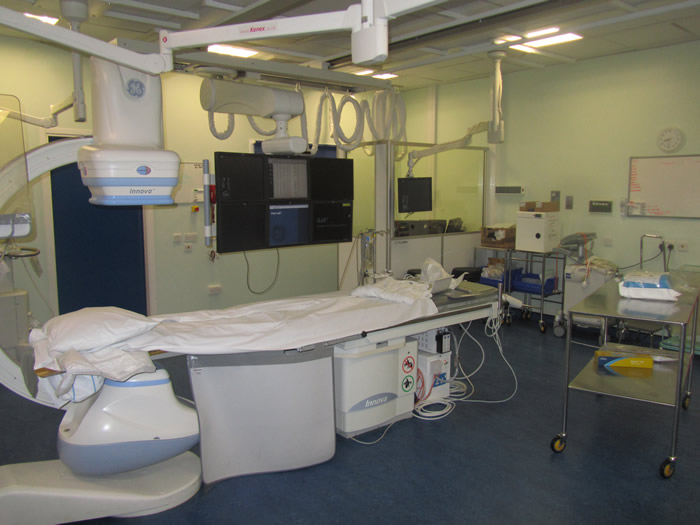In the cath lab, the nurses start Naveed on an infusion of tirofiban (a powerful anti-platelet drug). A sheath is inserted into his radial artery and an angiogram is performed that shows an occluded left anterior descending artery. An angioplasty guidewire is passed through the catheter to the blocked artery and advanced across the blockage. A thrombus aspiration catheter is fed over this wire, and thrombus removed from the artery by suction. This restores flow to the artery and a bare metal stent is implanted in the artery to complete the procedure.

The staff members in cath lab with roll over text to explain their role.
- Hi, I’m the ECG technician, I’ll be monitoring patient’s ECG and clinical status.
- Hello, I’m the Radiographer, I’ll be controlling X-ray equipment.
- Hello, I’m the Doctor, I’ll be performing the procedure.
- Hi there, I’m the Nurse, I’ll be assisting the procedure.
Pulse point
In the emergency setting, it is important to perform the angiogram and PCI as quickly as possible. Staff need to be aware that the patient may well be in physical discomfort but may also find the environment stressful and frightening. There are lots of staff members all trying to perform their roles as quickly and efficiently as possible, but it is vital to explain to the patient what is happening and to offer reassurance and if necessary medication to relieve distress and anxiety. It is very helpful for ambulance staff and other practitioners looking after the patient before they arrive at the cath lab to let the patient know what is going to happen.
For more information on the procedure, review modules 1, 3 and Joan or Hamish cases.
Page last reviewed: 12 Jun 2020


